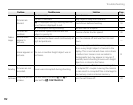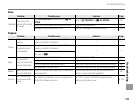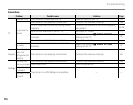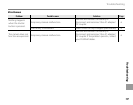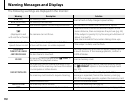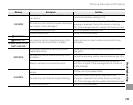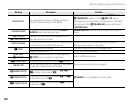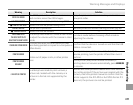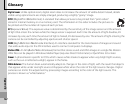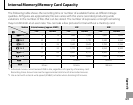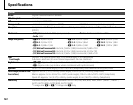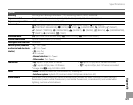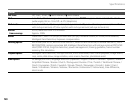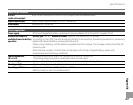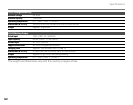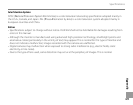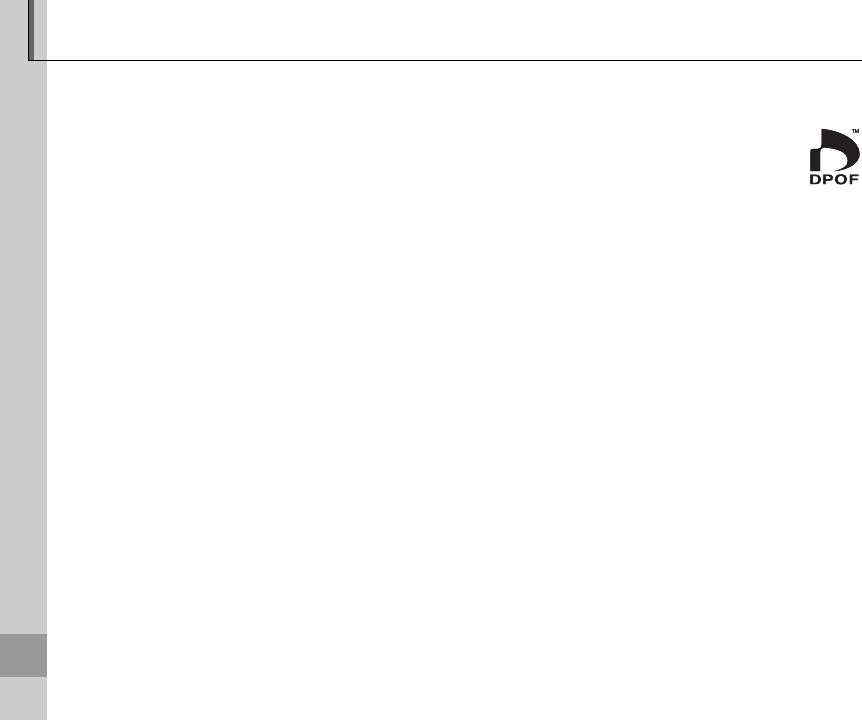
122
Appendix
Glossary
Digital zoom: Unlike optical zoom, digital zoom does not increase the amount of visible detail. Instead, details
visible using optical zoom are simply enlarged, producing a slightly “grainy” image.
DPOF (Digital Print Order Format): A standard that allows pictures to be printed from “print orders”
stored in internal memory or on a memory card. The information in the order includes the pictures to
be printed and the number of copies of each picture.
EV (Exposure Value): The exposure value is determined by the sensitivity of the image sensor and the amount
of light that enters the camera while the image sensor is exposed. Each time the amount of light doubles, EV
increases by one; each time the amount of light is halved, EV decreases by one. The amount of light entering the
camera can be controlled by adjusting aperture and shutter speed.
HDMI (High-Definition Multimedia Interface): An interface standard for the transmission of images and sound
that adds audio input to the DVI interface used to connect computers to displays.
Motion JPEG: An AVI (Audio Video Interleave) format that stores sound and JPEG images in a single file. Motion
JPEG files can be played in Windows Media Player (requires DirectX 8.0 or later) or QuickTime 3.0 or later.
Smear: A phenomenon specific to CCDs which causes white streaks to appear when very bright light sources,
such as the sun or reflected sunlight, appear in the frame.
White balance: The human brain automatically adapts to changes in the color of light, with the result that objects
that appear white under one light source still appear white when the color of the light source changes. Digital
cameras can mimic this adjustment by processing images according to the color of the light source. This
process is known as “white balance.”
Appendix



